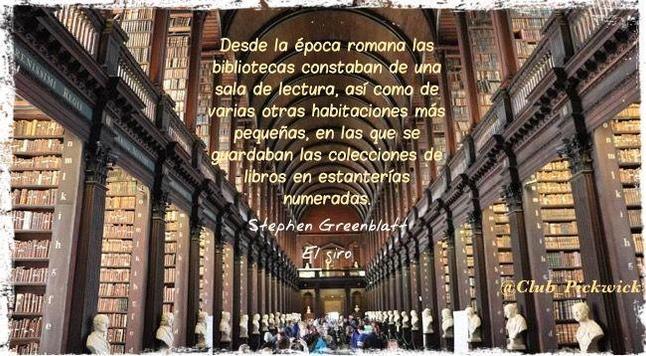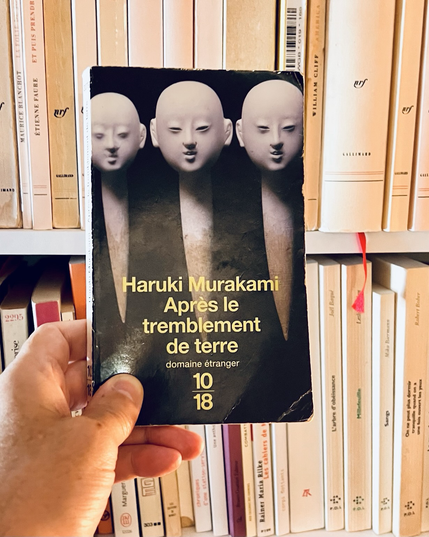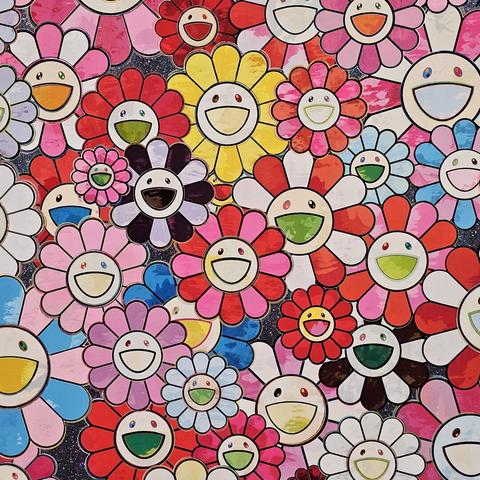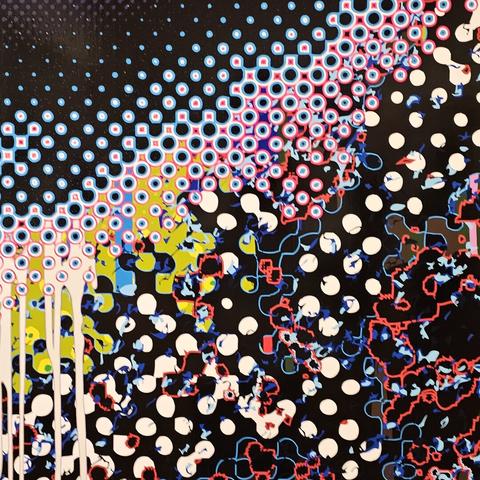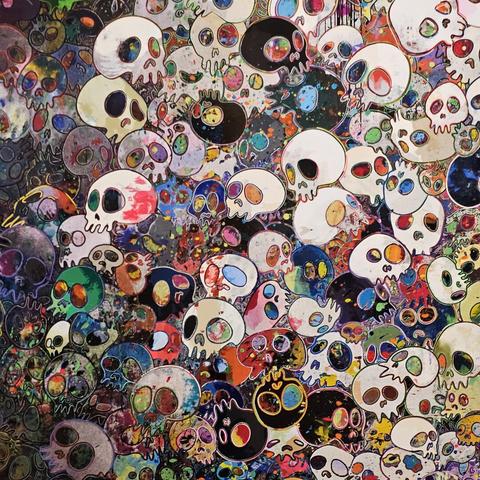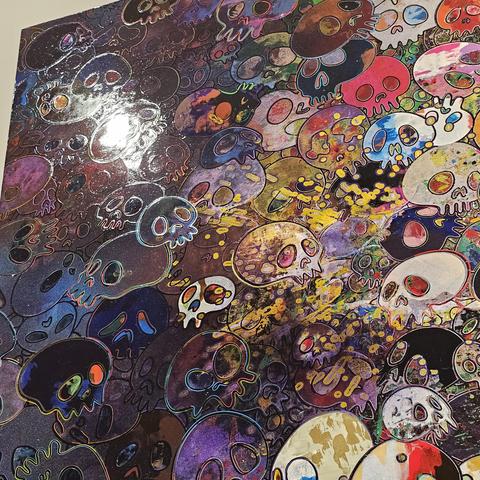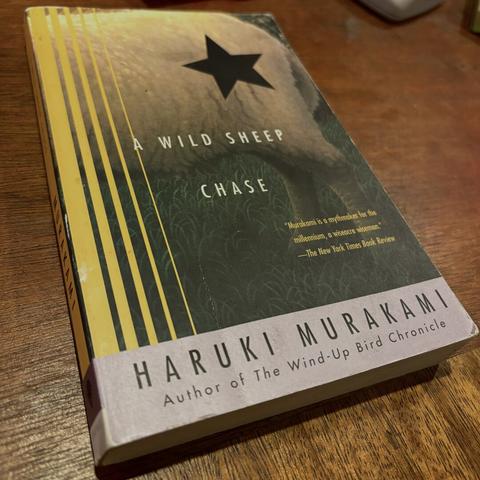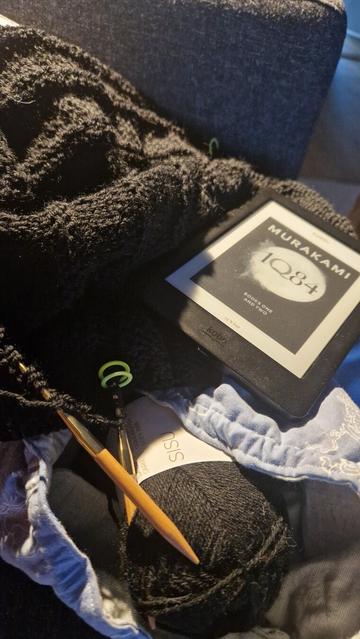@catzilla
#Murakami has magical writing, but his surreal content can make it challenging to care too much about his characters. I forget whether I read that one, but I should make another visit to #IQ84 over the long winter months. I don't highly recommend his latest work, which is a reworking of an early story he wrote.
#AmReading
#Murakami
I’m about 1/4 through Haruki Murakami’s Kafka on the Shore and so far not very impressed.
He writes very well, but I’m failing to get any attachment to the main plotline, I find the character mostly annoying. There’s a secondary plotline that’s way more interesting and that’s what’s keeping me going.
I have to return this book in 15 days and if I don’t finish it in 15 days I don’t think I’ll borrow it again.
Feliz #DiadelasBibliotecas 📚📘📕 https://letrasprestadas-clubpickwick.blogspot.com/2021/10/feliz-dia-de-las-bibliotecas.html Te invito a celebrar el 24/10 el #DiaInternacionaldelasBibliotecas acercándonos al origen de la celebración y a compartir algunos textos sobre ellas. Te acompañan #Borges, #Greenblatt, #Murakami y #VedranSmailovic
Feliz #DiadelasBibliotecas https://letrasprestadas-clubpickwick.blogspot.com/2021/10/feliz-dia-de-las-bibliotecas.html Te invito a celebrar el 24/10 el #DiaInternacionaldelasBibliotecas acercándonos al origen de la celebración y a compartir algunos textos sobre ellas. Te acompañan #Borges, #Greenblatt, #Murakami y #VedranSmailovic
ce n est pas un livre audio ni même un ebook que j'ai commencé ce soir mais le premier en papier et en ancre depuis longtemps ! à savoir 1Q84 de Haruki Murakamu, qui traine dans mon armoire chez mes parents depuis une quinzaine d'année ! #mieuxvauttardquejamais #Murakami. #detox #lecture
Will The Phillies Make A Push For Japanese Slugger Munetaka Murakami?
Japanese slugger Munetaka Murakami is expected to be posted for Major League Baseball free agency this winter. (Photo by Eric Espada/Getty Images) Getty Images Yeah, it…
#Japan #JP #JapanNews #japanbaseball #Japanese #japanesebaseball #Japanesenews #MunetakaMurakami #murakami #news #phillies #philly #phils #schwarber #yakult
https://www.alojapan.com/1390385/will-the-phillies-make-a-push-for-japanese-slugger-munetaka-murakami/
https://www.alojapan.com/1390385/will-the-phillies-make-a-push-for-japanese-slugger-munetaka-murakami/ Will The Phillies Make A Push For Japanese Slugger Munetaka Murakami? #Japan #JapanBaseball #JapanNews #Japanese #JapaneseBaseball #JapaneseNews #MunetakaMurakami #murakami #news #phillies #philly #phils #schwarber #yakult Japanese slugger Munetaka Murakami is expected to be posted for Major League Baseball free agency this winter. (Photo by Eric Espada/Getty Images) Getty Images Yeah, it still hurts bad — real bad. It’s only been four days s
Will The Phillies Make A Push For Japanese Slugger Munetaka Murakami? https://www.rawchili.com/mlb/376220/ #Baseball #JapanBaseball #JapaneseBaseball #MLB #MunetakaMurakami #murakami #Phillies #Philly #Phils #Schwarber #yakult
Munetaka Murakami Set for Offseason Posting https://www.rawchili.com/mlb/373335/ #Baseball #for #Munetaka #murakami #NipponProfessionalBaseball #NPB #offseason #Posting #set
El cuento de la criada de #MargaretAtwood, Crónica del pájaro que da cuerda al mundo de #Murakami, Sin aliento de Jennifer Niven, Vendido de Patricia McCormick, Anoche en el Telegraph Club de Malinda Lo, Una corte de niebla y furia de Sarah J. Maas, Crank de Ellen Hopkins, Para siempre... de Judy Blume, Las ventajas de ser invisible de Stephen Chbosky, Wicked de Gregory Maguire, Sé por qué canta el pájaro enjaulado de Maya Angelou, entre muchos otros.
📖 HARUKI MURAKAMI
Après le tremblement de terre
traduit du japonais par Corinne Atlan
Éditions 10|18, 2000
#murakami #apresletremblementdeterre #kobe #roman #editions1018 #lecturedujour
Du point de vue styliste, le tac-o-tac de dialogues et sa phraséologie simple fait souvent penser à #村上春樹 #MurakamiHaruki, qui, peu étonnant, est un grand fan de #川上 #Kawakami. Fort heureusement, les sujets de ses romans sont beaucoup plus variés du côté des marges de la société, les névrotiques, les victimes de harcèlement, la mafia, les alcooliques – un précariat pas souvent digne des expériences littéraires de #Murakami (Haruki, pas l’autre, #村上龍 #MurakamiRyū, lui, il l’en fait plein de ce genre). Dommage que ce livre soit situé uniquement à Tōkyō, ce qui laisse peu d’occasions de jouer sur l’accent d’Ōsaka si souvent de rigueur dans les précédents. 2/2
“Reading a #Murakami #novel … (is) a disquieting experience, like wandering through a forest with no end in sight, and #TheWind-UpBirdChronicle is the deepest and densest of all those forests.”
fivebooks.com/people/haruk...
Haruki Murakami
I particularly examined the surfaces of the paintings and objects, something that I had always wanted to do IRL. The surfaces were very slick, almost like a painted car, in acrylic (see the photo with the glare at the upper left-hand corner).
Every painting that I read about was in acrylic, which was also interesting — some gold leaf, pencil, etc.
I also took some photos that I thought accurately reflected the visual experience of looking at the paintings and the exhibition, but the photos are not the same as IRL.
The photos of the paintings on a computer display actually look better than the paintings IRL, I must say. The whites radiate much more on a computer display than from the reflected surfaces on exhibit, for example.
My memory of the whites is that they were gray by comparison than the online photos that I am looking at now.
But that's just how I see things. I barely see anything else but light intensity and color. My brain is otherwise completely empty, under ideal conditions.
It was such a pleasure to see these pieces IRL. I feel like half my life is complete now. When I look at the photographs, all I want to do is go back to the show (now closed).
As a painter, I really need to look at the painting closely and I imagine how it had been painted. And then there is this clear acrylic lacquer-type coating over everything.
The paintings are over 20 years old, and need to be protected. And varnishes have been applied to all manner of painting surfaces.
This forces one to ask: Is a painting an image, a two dimensional surface, or a sculpture?
Yes, it is a hilly surface.
But then you take photographs of it, and then it becomes a perfectly flat image.
On a computer display, the image radiates light.
The painting object itself reflects light.
Skulls were my favorite.
#painting #murakami #cleveland #cma
I’ve been seeking this one for a while and despite everything else being bad right now, this really made my day. Lovely novel, I’m overdue for a reread.
#books #harukimurakami #johngall #murakami
Mets’ David Stearns popped up in Japan to scout slugger https://www.rawchili.com/mlb/275989/ #Baseball #DavidStearns #JAPAN #JapaneseBaseball #MajorLeagueBaseball #Mets #murakami #NipponProfessionalBaseball #NPB #ScoutingInJapan #TetsuyaHayashida #TokyoYakultSwallows #YakyuCosmopolitan
Murakami on the reflexive imperative as you age
From What I Talk About When I Talk About Running, pg 37
I’m struck by how, except when you’re young, you really need to prioritize in life, figuring out in what order you should divide up your time and energy. If you don’t get that sort of system set by a certain age, you’ll lack focus and your life will be out of balance. I placed the highest priority on the sort of life that lets me focus on writing, not associating with all the people around me. I felt that the indispensable relationship I should build in my life was not with a specific person, but with an unspecified number of readers. As long as I got my day-to-day life set so that each work was an improvement over the last, then many of my readers would welcome whatever life I chose for myself.
From pg 86:
So anyway, my muscles right now are really tight, and stretching doesn’t loosen them up. I’m peaking in terms of training, but even so they’re tighter than usual. Sometimes I have to hit my legs with a fist when they get tight to loosen them up. (Yes, it hurts.) My muscles can be as stubborn as— or more stubborn than—I am. They remember things and endure, and to some extent they improve. But they never compromise. They don’t give up. This is my body, with all its limits and quirks. Just as with my face, even if I don’t like it it’s the only one I get, so I’ve got to make do. As I’ve grown older, I’ve naturally come to terms with this. You open the fridge and can make a nice—actually even a pretty smart—meal with the leftovers. All that’s left is an apple, an onion, cheese, and eggs, but you don’t complain. You make do with what you have. As you age you learn even to be happy with what you have. That’s one of the few good points of growing older.
From pg 153:
Sixteen is an intensely troublesome age. You worry about little things, can’t pinpoint where you are in any objective way, become really proficient at strange, pointless skills, and are held in thrall by inexplicable complexes. As you get older, though, through trial and error you learn to get what you need, and throw out what should be discarded. And you start to recognize (or be resigned to the fact) that since your faults and deficiencies are well nigh infinite, you’d best figure out your good points and learn to get by with what you have
#ageing #Murakami #reflexiveImperative #reflexivity #running
